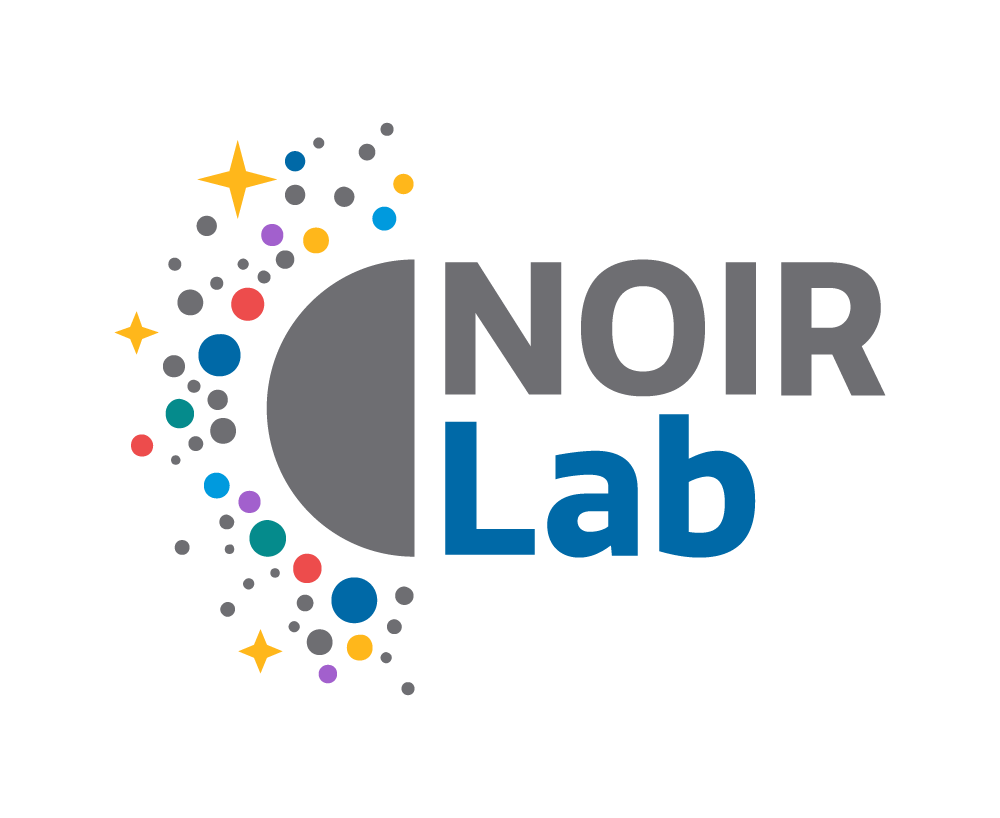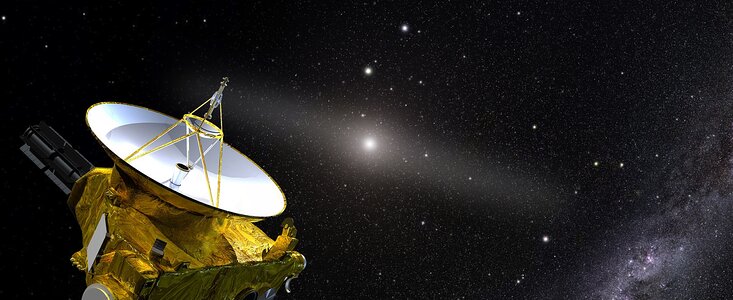NOIRLab Scientist Finds the Universe to be Brighter than Expected
12 January 2021
Measurements of the Universe’s darkness performed with NASA’s New Horizons probe reveal an unexplained glow to the Universe. These results are presented at the January 2021 meeting of the American Astronomical Society.[1]
NOIRLab’s facilities focus on ground-based astronomy, but NOIRLab scientists also use data from space telescopes to answer their astronomical questions — and sometimes even use space probes designed to visit other planets. A team of astronomers led by NOIRLab scientist Tod Lauer, which included other members of the New Horizons science team and Marc Postman from the Space Telescope Science Institute (STScI), used the New Horizons spacecraft [2] to answer a fundamental question — how dark is the Universe?
“The Universe is dark, but not as dark as we thought,” said Lauer.
This measurement — known as the cosmic optical background — is the visible equivalent of the well-known cosmic microwave background.
“While the cosmic microwave background tells us about the first 450,000 years after the Big Bang, the cosmic optical background tells us something about the sum total of all the stars that have ever formed since then,” explained Postman. “It puts a constraint on the total number of galaxies that have been created, and where they might be in time.”
The key to the team’s approach was to use a telescopic camera on the New Horizons space probe as it was traveling through the outer regions of the Solar System, rather than the Hubble Space Telescope or any other probe operating around Earth or the inner Solar System. Having flown past Pluto in 2015 and the remote Kuiper Belt object Arrokoth in 2019, New Horizons is now more than 7 billion kilometers (4 billion miles) from Earth. This distance gives the space probe a much darker sky to measure, providing astronomers with more accurate results. Just as light pollution limits the view of the night sky in cities, sunlight scattered by tiny dust particles in the inner Solar System completely overwhelms the faint background light coming from the distant Universe.[3]
In the far outer regions of the Solar System, New Horizons was able to measure the intrinsic darkness of the night sky and estimate the number of galaxies populating the Universe.
After correcting their measurement by subtracting a number of light sources, such as the known stars in the Milky Way and reflections from interstellar dust, the team found that some light remained. The source of this extra light remains unclear. One possibility is that a large number of dwarf galaxies in the nearby Universe lie just beyond detectability. Equally possible is that the diffuse halos of stars that surround galaxies might be brighter than expected. Other possibilities include a population of rogue, intergalactic stars spread throughout the cosmos — or there simply may be many more faint, distant galaxies than theories suggest.
Notes
[1] This result will be featured in an online session at the 237th American Astronomical Society meeting: "New Horizons Detection of the Cosmic Optical Background" on Wednesday, 13 January at 12:40pm EST.
[2] New Horizons is a NASA space probe designed to explore the outer Solar System, particularly Pluto. Launched in 2006, it completed its Pluto flyby in 2015 and is now on an extended voyage through the Kuiper Belt. Amongst its various scientific instruments, New Horizons is equipped with a small 20-centimeter (8-inch) telescope — which proved to be key for this research.
[3] This ambient glow is known as zodiacal light and is often seen from Earth by astrophotographers, stargazers, and other dark sky enthusiasts.
Links
Contacts
Tod Lauer
NSF NOIRLab
Cell: +1 520 861 4618
Email: lauer@noao.edu
Amanda Kocz
NSF NOIRLab
Cell: +1 520 318 8591
Email: amanda.kocz@noirlab.edu


